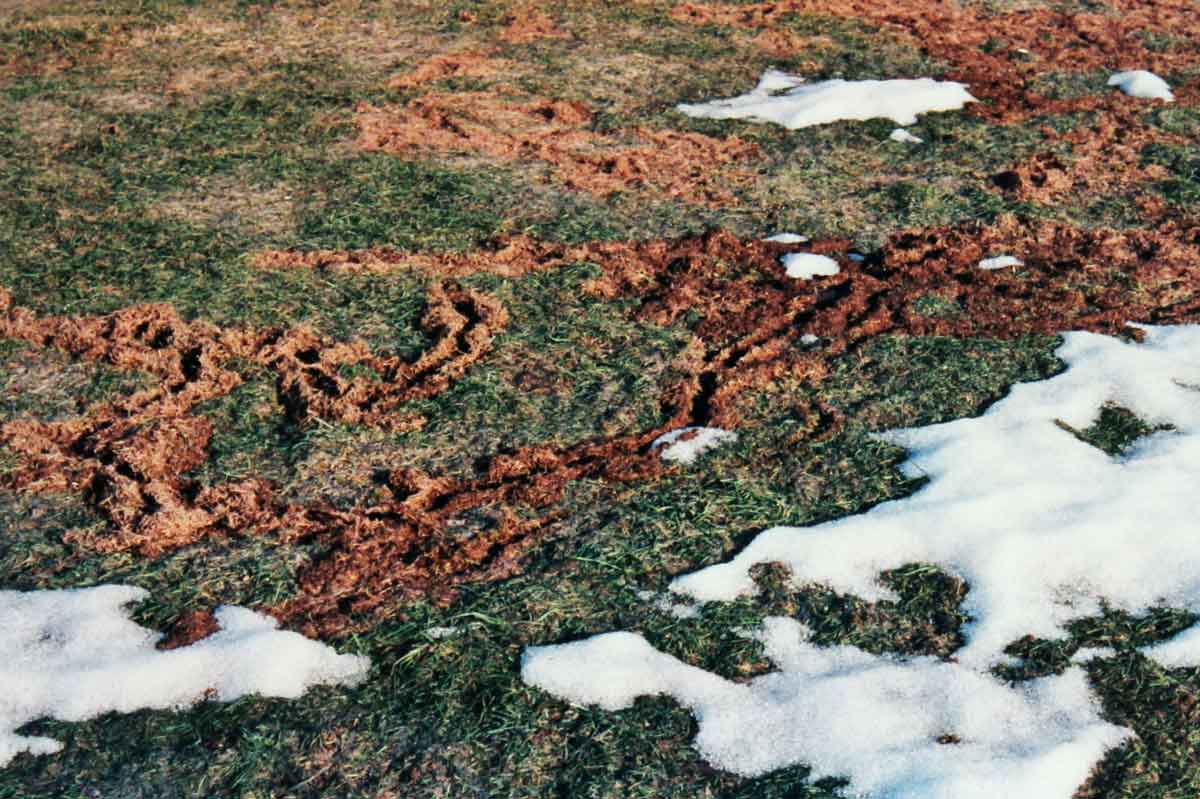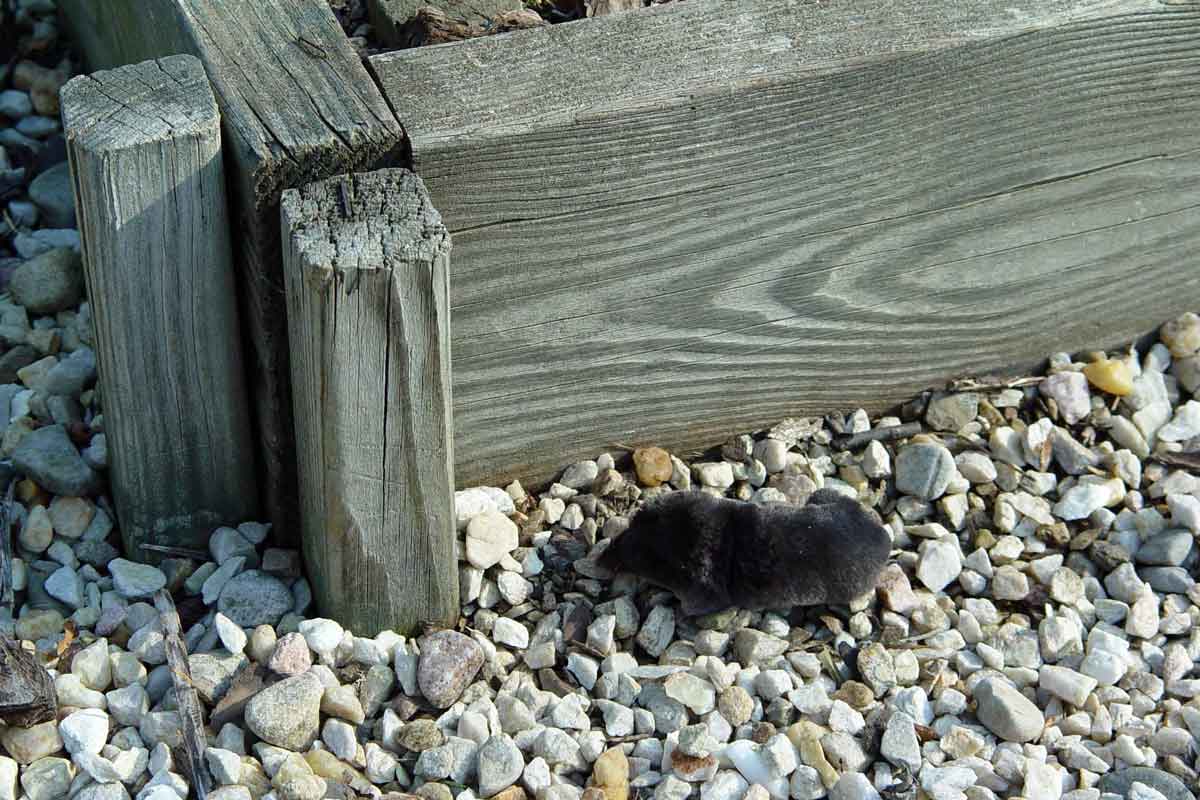The Lawn Mystery of the “Orange-Shoe Disease”
Want to know what the orange dust in your lawn and all over your shoes is? Learn about the lawn disease known as lawn rust.

Curving surface tunnels in the lawn at winter’s end are the work of voles. George Weigel
Many gardeners look out the window at this time of year and encounter the end-of-winter mystery of curving surface tunnels all over the lawn. The shallow, two-inch-wide channels show up in a seemingly random network as the snow melts, marring what had been a solid sea of green grass heading into winter. The culprit usually is voles, a rodent pest whose damage is seen far more than the animal itself.
Voles are timid rodents about the size of a mouse, only darker in color and with shorter tails. They seldom venture into the middle of a lawn for fear of being eaten by cats, hawks, or other predator birds. During the growing season, they’re content to eat the roots out from under thick groundcover plantings or to sneak around eating bulbs, sweet potatoes, and the bark of young trees and shrubs under cover of mulch or plants. When it snows, though, voles have protection anywhere they want to go. It’s then that they gorge themselves on grass and create tunnels in their bolder, snow-covered search for food. When the snow melts, they retreat undercover.

A vole scurries across a stone path. George Weigel
Looking to stop voles in their tracks? Try any of these methods to vole-control:
The good news is that grass is resilient. It might look bad at winter’s end, but once the weather warms and the grass starts growing, the tunnels often fill in on their own. You can speed the process by raking away gnawed-off blades and scattering new grass seed in the bare areas.